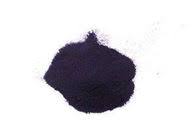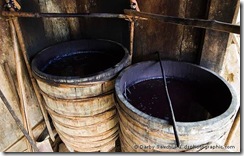Indigo Blue Vat Blue


When considering expert involvement in the indigo industry, it is important to highlight the role of local communities traditionally involved in the dyeing process. Experts often collaborate with these communities to preserve indigenous knowledge while ensuring fair trade practices. By doing so, they maintain the authenticity and authority of natural indigo dye products in the global market. Brands looking to incorporate natural indigo into their product lines should consider its market appeal among eco-conscious consumers. In addition to offering a sustainable product, they can educate their customers about caring for indigo-dyed items, such as recommending cold washes and air drying to maintain the vibrancy of the dye. This education enhances the customer experience, providing expertise and guidance that customers value in their purchase. Furthermore, a commitment to transparency in sourcing and production not only enhances a company's trustworthiness but also sets it apart in a market where consumers often question the origins of their goods. By clearly communicating the journey of the indigo dye—from plant to product—businesses can bolster their reputation as authoritative voices in the natural dye industry. In conclusion, the renewed interest in natural indigo dye is more than a trend; it is part of a broader movement towards sustainability, authenticity, and consciousness. As a product, it fulfills the desire for responsible consumption while providing a unique and rich experience for the user. For businesses, the use of indigo dye can symbolize a commitment to tradition and the environment, making it a powerful component in crafting a brand story that resonates with today's mindful consumers.
-
The Timeless Art of Denim Indigo Dye
NewsJul.01,2025
-
The Rise of Sulfur Dyed Denim
NewsJul.01,2025
-
The Rich Revival of the Best Indigo Dye
NewsJul.01,2025
-
The Enduring Strength of Sulphur Black
NewsJul.01,2025
-
The Ancient Art of Chinese Indigo Dye
NewsJul.01,2025
-
Industry Power of Indigo
NewsJul.01,2025
-
Black Sulfur is Leading the Next Wave
NewsJul.01,2025

Sulphur Black
1.Name: sulphur black; Sulfur Black; Sulphur Black 1;
2.Structure formula:
3.Molecule formula: C6H4N2O5
4.CAS No.: 1326-82-5
5.HS code: 32041911
6.Product specification:Appearance:black phosphorus flakes; black liquid

Bromo Indigo; Vat Bromo-Indigo; C.I.Vat Blue 5
1.Name: Bromo indigo; Vat bromo-indigo; C.I.Vat blue 5;
2.Structure formula:
3.Molecule formula: C16H6Br4N2O2
4.CAS No.: 2475-31-2
5.HS code: 3204151000 6.Major usage and instruction: Be mainly used to dye cotton fabrics.

Indigo Blue Vat Blue
1.Name: indigo blue,vat blue 1,
2.Structure formula:
3.Molecule formula: C16H10N2O2
4.. CAS No.: 482-89-3
5.Molecule weight: 262.62
6.HS code: 3204151000
7.Major usage and instruction: Be mainly used to dye cotton fabrics.

